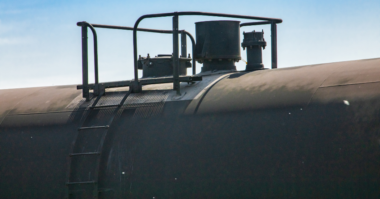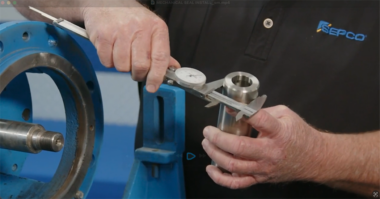Proper fluid sealing techniques are essential for preventing leaks, contamination and other unwanted outcomes. Here’s what you need to know and do for the best results.
Understand How Environmental and Operating Characteristics Affect the Seal
Before choosing the right sealing option, you must know which stressors the seal will encounter during normal operations. It’s then possible to select products accordingly rather than making incorrect assumptions.
Firstly, a seal must have properties that allow it to conform to irregularities in the surrounding surface, such as a pipe’s metal. Professionals must also determine if the seal will get regularly exposed to high temperatures. If so, they should look for opportunities to upgrade or reinforce seals and look for temperature-resistant anti-extrusion products. High temperatures often soften the seal’s materials, making this safeguard less effective.
However, it’s not just excessively high temperatures that can put a seal under stress. The parts can become brittle and much more prone to damage when temperatures drop below 50° Fahrenheit. Sealing action also reduces at lower temperatures.
Sealing generally improves as pressure does. Bear in mind, though, that shear forces often exceed what the seal elastomer can tolerate when using fluid sealing techniques in a high-pressure system. That’s why using a combination of materials and proven practices is often necessary to get the desired results and prevent leaks.
Clarify the Desired Goals
Choosing the appropriate fluid sealing techniques requires people to confirm what they want the selected seal to accomplish. A vehicle consumes more fuel with at least 30 seconds of idling than if someone stopped and restarted it. However, waste can also occur when a fuel injector’s seal or O-ring fails. In this situation, the goal is to address the problem — preventing fuel leaks.
Ingressed contamination can also manifest due to leaks and damage or if people are not carefull enough during maintenance. If individuals find leaks, the first step is to verify that the existing fluid sealing techniques failed. If they did, why? Then, people must look deeper to confirm what went wrong.
Indeed, the goal of all fluid sealing methods is to prevent problems. However, while doing that, people should ask if an issue has already occurred or if their efforts are solely preventive.
Another detail to consider is whether replacing the seal is the only feasible possibility. Additive products restore the elasticity of O-rings and seals, causing them to swell and perform better.
Follow Best Practices Associated With the Desired Application
Anyone assessing fluid sealing techniques must educate themselves on the best practices to follow based on the needs of what they’re trying to seal. While working with a hydraulic fluid system, for example, people must choose either static or dynamic seals depending on whether the associated component moves.
There are also specific considerations linked to particular seals. Perhaps the component in question is a valve stem requiring an improved seal. In such cases, there are three fugitive emissions standards to follow. Relatedly, people can test for leaks with methane or helium.
It’s also valuable to realize newer fluid sealing techniques are not always better than those developed decades ago. People started using compression packing in the early 20th century for sealing components used in wastewater treatment. It’s now the oldest and most frequently used option. However, the packing materials have changed. People initially used lubricated vegetable fiber — now, they’re more likely to use options like carbon or graphite yarns.
In most cases, people should not immediately focus on using the newest options for sealing fluid. They’ll get the best results by learning what others have tried before, then attempting those methods. If they don’t work, such outcomes justify exploring alternative innovations.
Be Methodical When Assessing Fluid Sealing Techniques
This overview shows no universal path to use fluid sealing techniques for a given machine or part. However, when people take the time to understand their application’s unique needs and environment, they’re most likely to get the best results and reduce the chances of adverse outcomes.
Additionally, if the situation involves a client seeking better methods of stopping leaks, listen to the specifics about their machinery, operating conditions and anything they’ve tried before. Relying on those details will avoid easily preventable trial and error that wastes time and money.




